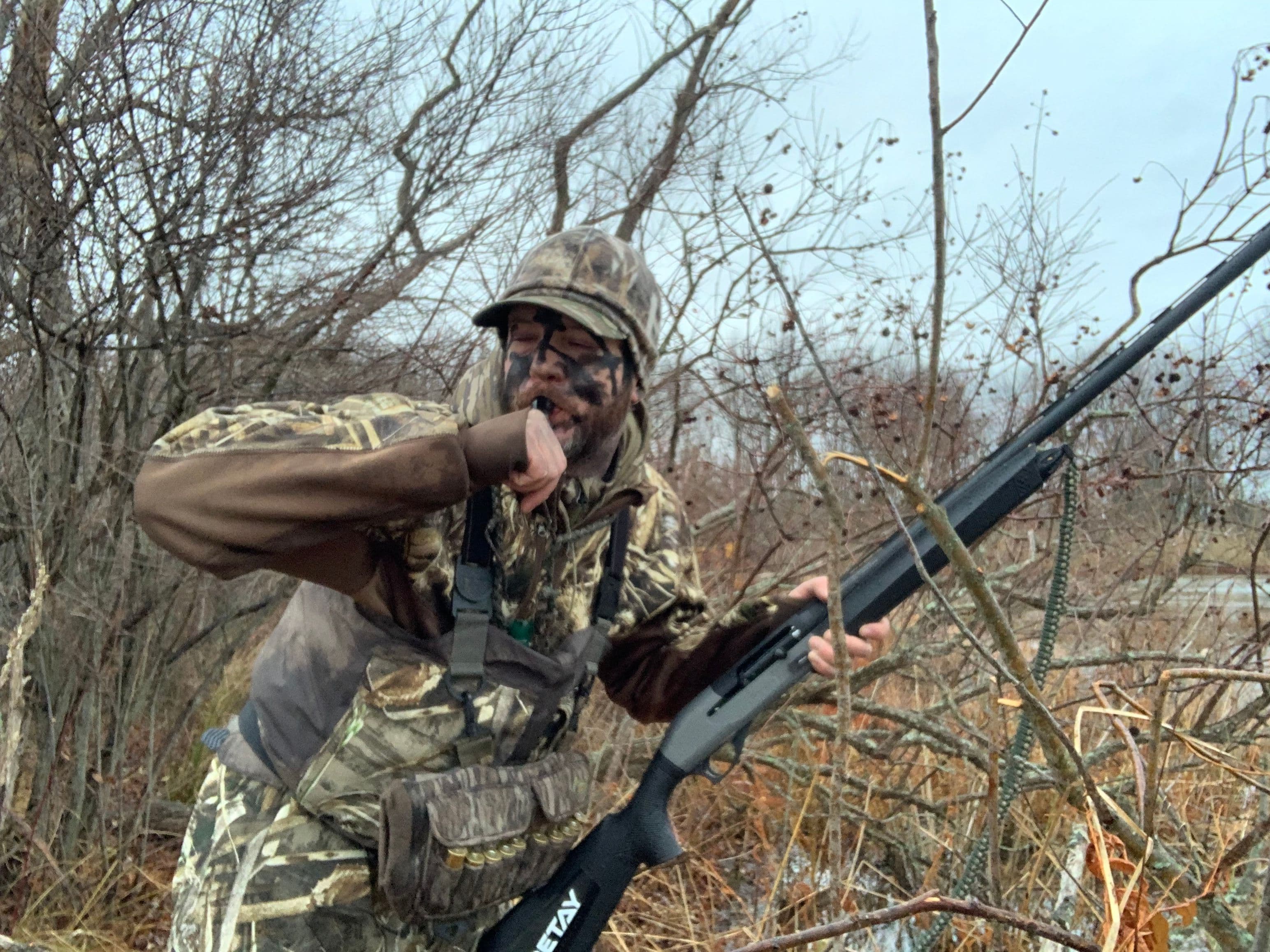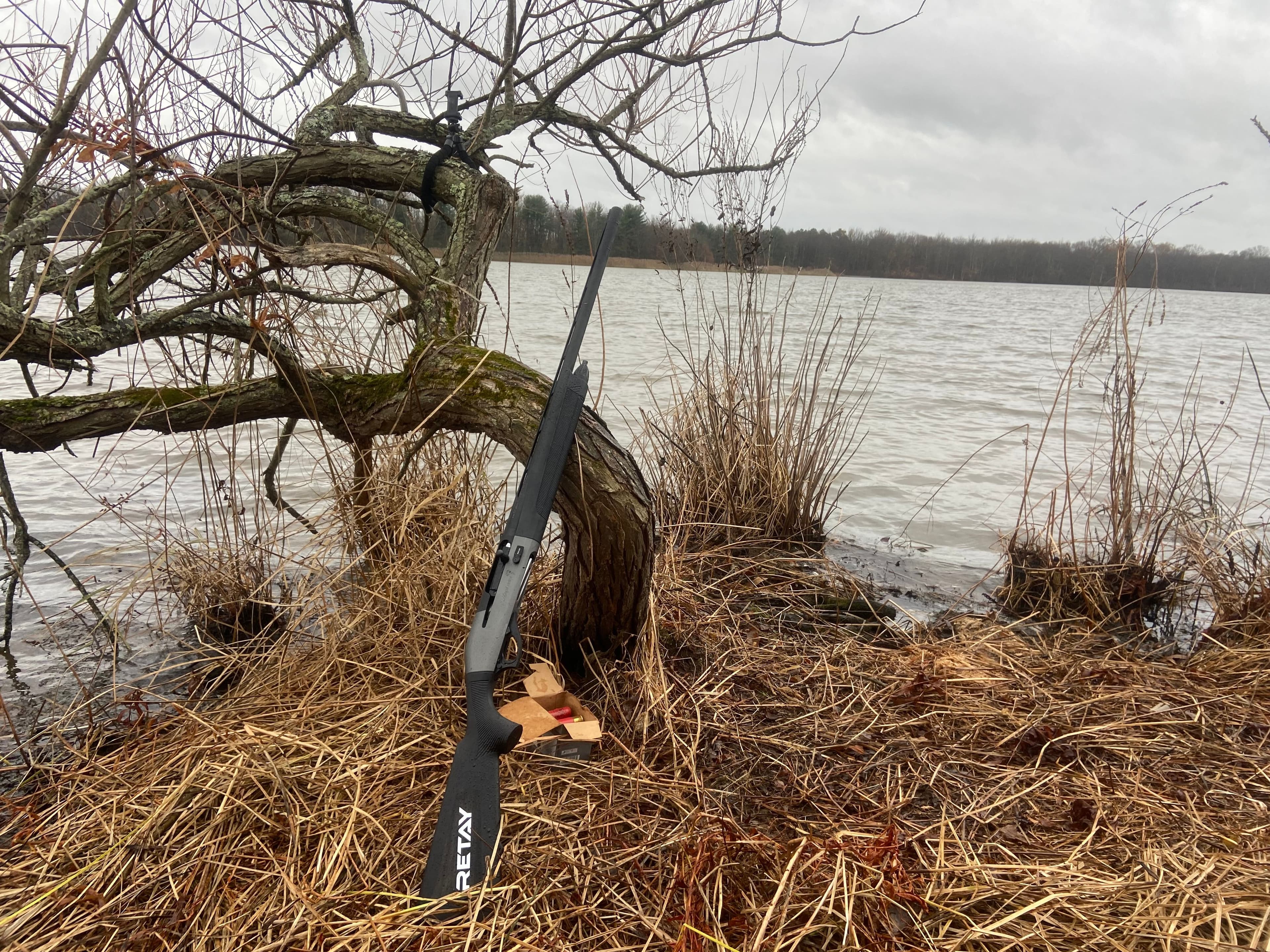What Is the Correct Way to Shoulder a Shotgun? Mastering Form and Waterfowl Techniques


Justin Hunold
11/22/2024
Mastering the art of properly shouldering a shotgun is not just a skill, but a fundamental pillar of shooting accurately. Whether you're aiming at fast-flying teal or distant diver ducks on open water, a solid shotgun mount is your starting point. Let's delve into the mechanics of this crucial skill, how to align your body, and tips for different waterfowl hunting scenarios.
The Correct Way to Shoulder a Shotgun
When you shoulder your shotgun, the stock should fit snugly into your shoulder pocket—just above your armpit and slightly off-center to avoid recoil into the collarbone. At the same time, your cheek should rest naturally along the comb of the stock, providing a consistent sight picture along the rib and bead of your barrel.
Key TipCriticalor Proper Shotgun Mounting:
- Create the Shoulder Pocket: Relax your shoulder and raise your elbow to create a natural "pocket" for the buttstock to rest.
- Cheek-to-Stock Connection: When you mount the shotgun, bring it to your face, not vice versa. This ensures your head stays upright for better target acquisition.
- Grip and Posture: Your front hand should guide the barrel while your rear hand maintains firm but not tense control over the grip. Lean slightly forward into the shot for balance.
- Follow Through: Keep your eyes locked on the target and smoothly follow through after firing to maintain control and prepare for a second shot if needed.
When You Shoulder Your Shotgun, What Part of Your Body Should Fit Snugly Against the Stock?
The shoulder pocket, just above your armpit and slightly off-center, is the part of your body that should snugly fit against the shotgun stock. This area not only absorbs the recoil but also provides the stability necessary for accurate shooting. A proper mount, with the stock resting in this pocket, is crucial for managing recoil and hitting your target. Resting the stock on your bicep or collarbone can lead to painful recoil and missed shots.
When You Shoulder Your Shotgun, What Part of Your Body Should Fit Snugly Against the Stock?
When you shoulder your shotgun, the stock should fit snugly into your shoulder pocket. This area is located just beneath your collarbone, where your shoulder meets your clavicle. Positioning the butt of the shotgun in this natural pocket provides a stable shooting platform and helps absorb recoil effectively. To achieve this, bring the shotgun up to your face first, ensuring a firm cheek weld, and then allow the stock to settle into your shoulder pocket. This technique promotes consistent accuracy and comfort during shooting sessions.
Tips for Shooting Different Types of Waterfowl
Each species and hunting scenario demands slight adjustments in shooting technique. Here’s how to handle common waterfowl situations:
Teal
Teal are small, fast, and unpredictable.
- Lead Time: They require short but sharp leads due to their quick flight patterns.
- Shotgun Fit: A light, fast-swinging shotgun is ideal.
- Timing: Don’t rush—wait for them to commit before pulling the trigger.
Decoying Ducks
Ducks coming into decoys often provide a classic overhead or quartering shot.
- Lead Time: Minimal lead, depending on their speed and angle.
- Setup: Position yourself with a clear shooting lane to avoid swinging through decoy lines.
- Focus: Watch their wingbeats for the exact moment they commit to landing.
Passing Ducks
Ducks flying laterally requires good tracking skills.
- Lead Time: This depends on distance—closer ducks need a shorter lead, while distant ducks need a more exaggerated swing.
- Follow Through: Keep your barrel moving to ensure a clean hit.
Decoying Geese
Geese are larger targets but can be surprisingly resilient.
- Lead Time: Modest lead is sufficient, but be prepared to adjust for wind and speed.
- Ammo Choice: Opt for heavier non-toxic loads, such as BB or BBB shot.
- Aim Point: Focus on their head or neck for a cleaner harvest.
Diver Ducks in Open Water
Divers are known for their speed and low-flying patterns.
- Lead Time: These birds often require a longer lead due to their velocity.
- When shooting diver ducks in open water, a steady platform is crucial. Whether you're shooting from a boat or a layout blind, maintaining balance and a controlled swing is key. This ensures that your barrel is always on target, increasing your chances of a successful shot.
- Choke Selection: Use a tighter choke for longer-range shots over open water.
Final Fitting
Mastering 'What is the correct way to shoulder a shotgun?' is the first step toward becoming an effective waterfowl hunter. This fundamental skill, when perfected, can significantly enhance your shooting accuracy. When you shoulder your shotgun, the pocket of your shoulder should fit snugly against the stock to manage recoil and maintain accuracy. From teal to geese, understanding the flight patterns and behavior of different waterfowl will help you adjust your technique and bag more birds.
With practice, these fundamentals will become second nature, allowing you to focus on the thrill of the hunt.
What Is the Correct Way to Shoulder a Shotgun? (And Choosing the Right Shot Size and Choke)
Properly shouldering a shotgun is only part of the equation for success in the duck blind or goose pit. To consistently down birds, you need the right combination of shot size and choke to match your target species and hunting scenario. Understanding these factors empowers you to make informed decisions. Let’s dive into the best ammo and choke pairings for teal, decoying ducks, passing ducks, decoying geese, and diver ducks in open water.

Understanding Shot Size and Choke Combinations
Shot size refers to the diameter of the pellets in your shell, with smaller numbers indicating larger pellets (e.g., BB is larger than #4). Chokes adjust the spread of your shot pattern, ranging from open chokes (widespread) to tight chokes (narrow spread). Matching the right shot size and choke to your quarry ensures effective and ethical kills.
Teal
- Shot Size: #6 or #7 steel shot
- Choke: Improved Cylinder or Light Modified
- Why: Teal is small and fast, so a light shot provides enough density to hit these zippy targets. The wide pattern from an Improved Cylinder choke increases your chances of hitting them in close-range scenarios.
Decoying Ducks
- Shot Size: #4 or #3 steel shot
- Choke: Modified
- Why: Decoying ducks often present shots within 20-30 yards. #4 or #3 shot strikes a good balance between pattern density and knockdown power, while a Modified choke tightens your pattern just enough for clean hits without blowing up the meat.
Passing Ducks
- Shot Size: #3 or #2 steel shot
- Choke: Modified or Full
- Why: Passing ducks are typically farther out, requiring larger shot sizes like #2 for added energy at range. A tighter choke ensures your pattern stays effective at longer distances, increasing your hit probability.
Decoying Geese
- Shot Size: BB or BBB steel shot
- Choke: Modified or Full
- Why: Geese are large, tough birds that need heavier pellets to penetrate their thick feathers and bodies. A Modified choke works well for closer shots, while a Full choke is better for shots beyond 30 yards.
Diver Ducks in Open Water
- Shot Size: #3 or #2 steel shot
- Choke: Full or Improved Modified
- Why: Diver ducks are speedy and often farther out over open water. The larger shot size adds downrange energy, while the tighter pattern of a Full choke increases your odds of connecting on these challenging birds.

How Shot and Choke Choices Impact Hunting Success
- Teal Hunts: Opting for the #6 shot ensures you don’t destroy these small birds while giving you the density needed for close, erratic shooting.
- Decoying Ducks: Using #3 or #4 shot helps you avoid excessive damage on ducks that might be coming in feet-down, close to your decoys.
- Passing Ducks: Larger shot sizes and tighter chokes are key for birds flying farther out.
- Decoying Geese: BB shot delivers the punch needed to take down these big birds cleanly, especially with a tighter choke.
- Diver Ducks: Open water requires precision and power. Larger shot sizes, like #2, combined with a Full choke, maximize effectiveness.
Final Thoughts
Properly shouldering your shotgun is essential for consistent accuracy, but pairing the right shot size and choke with your hunting situation completes the formula. When you shoulder your shotgun, ensure your shoulder pocket fits snugly against the stock, then match your gear to the birds you’re targeting.
Whether shooting teal at close range or leading diver ducks at a distance, the right combination of shot and choke will help you make ethical kills and confidently fill your bag limit.